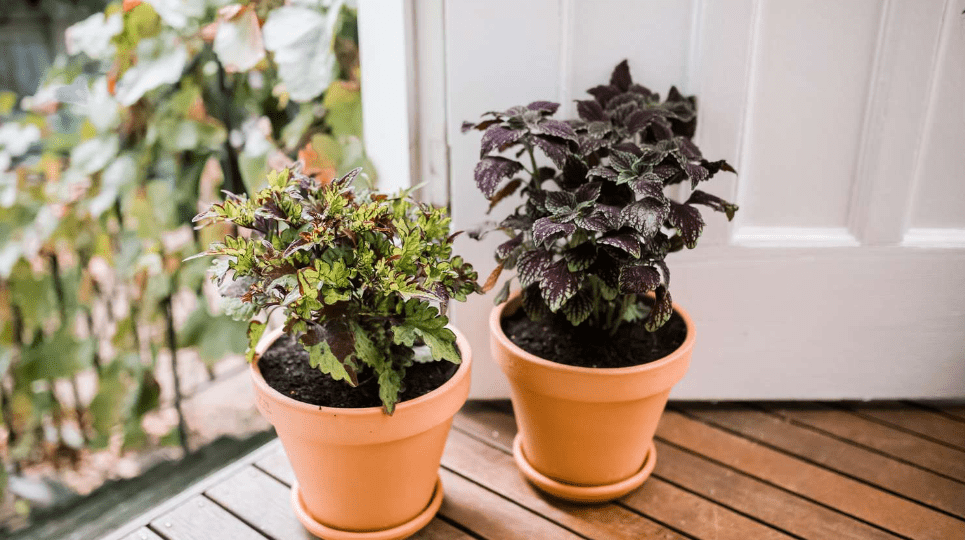
Growing Coleus Indoors: Transform Your Space with These Colorful Plants
Welcome to our guide on growing Coleus plants indoors! Whether you’re a seasoned gardener or just starting out, these vibrant and colorful plants can add a pop of color and life to any space. In this post, we’ll explore the benefits of growing Coleus indoors and provide you with tips and tricks for caring for these beautiful plants. Whether you have a green thumb or not, you’ll find valuable information to help you transform your space with these stunning plants. Let’s get started!
Table of Contents
ToggleUnderstanding Coleus Plants
A. What is Coleus?
Coleus is a colorful and versatile plant that is commonly grown for its vibrant foliage. It comes in a variety of colors and patterns, making it a popular choice for indoor gardens. Coleus plants are easy to care for and can thrive in a wide range of conditions, making them an excellent choice for beginner gardeners. Whether you’re looking to add a splash of color to your living room or brighten up your office space, Coleus plants are a great option for indoor gardening.
1. Varieties of coleus and their distinctive features
There are many different varieties of coleus, each with its own distinctive features. Some popular varieties include ‘Wizard Mix,’ which features a mix of bright and bold colors, ‘Kong Mix,’ which has larger leaves and a more tropical look, and ‘Black Dragon,’ which has deep, dark foliage. Each variety offers something unique in terms of color, size, and pattern, allowing you to find the perfect coleus plant to suit your aesthetic preferences.
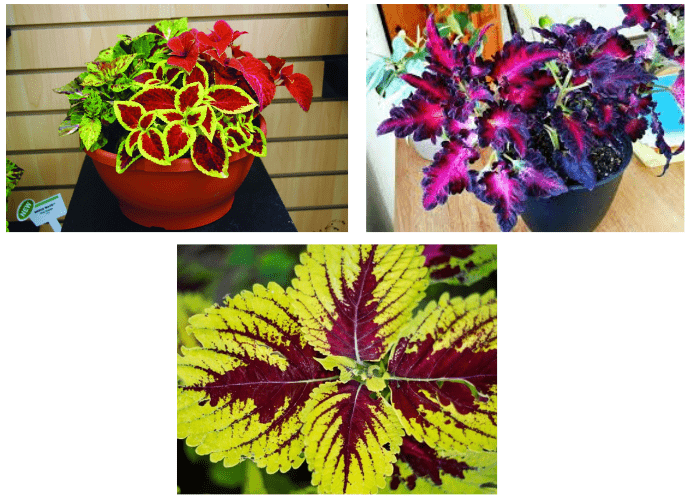
2. The appeal of coleus: vibrant colors and patterns
The appeal of coleus lies in its vibrant colors and patterns, which make it a striking and eye-catching addition to any indoor space. With its wide range of colors, from bright pinks and purples to deep greens and reds, as well as unique patterns like speckles and swirls, coleus plants bring a pop of color and visual interest to any room. Whether you prefer a bold and striking look or a more subtle and understated vibe, there’s a coleus variety to suit your style.
B. Benefits of Growing Coleus Indoors
Growing coleus indoors offers a range of benefits. Not only do they provide a pop of color and visual interest to your indoor space, but they are also relatively low-maintenance plants. Coleus thrive in bright, indirect light and require regular watering, making them an easy and rewarding option for indoor gardening. Additionally, coleus are known for their air-purifying properties, helping to improve the air quality in your home. With their vibrant colors and low-maintenance care, coleus plants are a popular choice for indoor gardeners looking to add some visual appeal to their living spaces.
1. Aesthetic enhancement to indoor spaces.
Coleus plants are a wonderful addition to indoor spaces, as they provide a pop of color and visual interest. Whether you prefer a bold and striking look or a more subtle and understated vibe, there’s a coleus variety to suit your style. In addition to their aesthetic appeal, coleus plants are relatively low-maintenance, thriving in bright, indirect light and requiring regular watering. This makes them an easy and rewarding option for indoor gardening. Furthermore, coleus plants are known for their air-purifying properties, helping to improve the air quality in your home. With their vibrant colors and low-maintenance care, coleus plants are a popular choice for indoor gardeners looking to add some visual appeal to their living spaces. If you’re looking to add some greenery and color to your indoor environment, consider growing coleus plants.
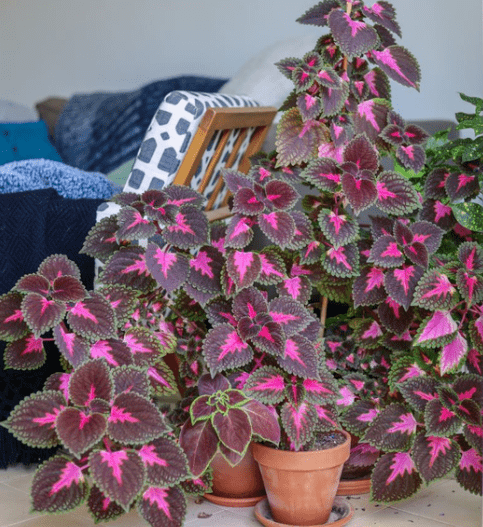
2. Easy care and maintenance
Coleus plants are also popular for indoor gardening because they are relatively low-maintenance and easy to care for. They thrive in well-draining soil and require regular watering, but they can tolerate a wide range of light conditions, making them adaptable to different indoor environments. Additionally, coleus plants are relatively pest-resistant and can thrive in both warm and cool indoor temperatures, making them a versatile and resilient option for indoor gardening.
3. Air-purifying properties
In addition to their aesthetic appeal, coleus plants also offer air-purifying properties, helping to improve indoor air quality by removing harmful toxins and pollutants. This makes them a great choice for adding a touch of greenery to your indoor space while also benefitting your overall health and well-being.
4. Versatility in indoor spaces
Lastly, coleus plants are versatile in indoor spaces, as they can be grown in pots, hanging baskets, or as part of a larger indoor garden arrangement. They can be used as standalone statement plants or mixed with other indoor plants to create a colorful and diverse indoor garden display. Whether you’re a beginner or experienced indoor gardener, coleus plants are a great choice for adding color and life to your indoor spaces.
Preparing to Grow Coleus Indoors
A. Choosing the Right Variety
When choosing a variety of coleus plants to grow indoors, consider the size of your space and the type of light it receives. There are many different varieties of coleus, ranging from compact and bushy to tall and trailing, so be sure to select one that suits your specific indoor gardening needs. Some popular indoor coleus varieties include ‘Kong Rose’, ‘Electric Lime’, and ‘Wizard Mix’, all of which are well-suited for indoor growing. It’s also important to consider the color and pattern of the foliage, as coleus plants come in a wide range of vibrant and eye-catching combinations. Ultimately, choosing the right variety of coleus plant can help ensure a successful and visually appealing indoor garden display.
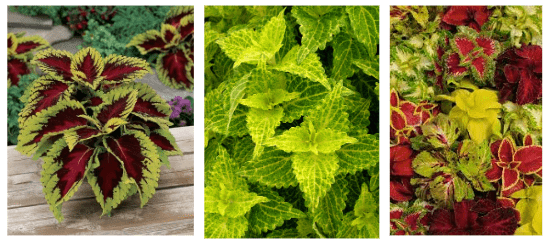
B. Selecting the Right Container
When selecting a container for your indoor coleus plant, it’s important to choose one that provides adequate drainage and allows for proper airflow. A container with drainage holes at the bottom will prevent water from accumulating and causing root rot, while a well-ventilated container will help prevent mold and mildew from forming. Additionally, be sure to choose a container that is the right size for your coleus plant, allowing for sufficient root growth and stability. Consider using a lightweight, durable material such as plastic or fiberglass, as these materials are easy to move and won’t break if accidentally knocked over. It’s also a good idea to select a container that complements the aesthetic of your indoor space, whether it be a colorful ceramic pot or a sleek, modern planter. Taking the time to select the right container for your indoor coleus plant will help ensure its health and longevity.
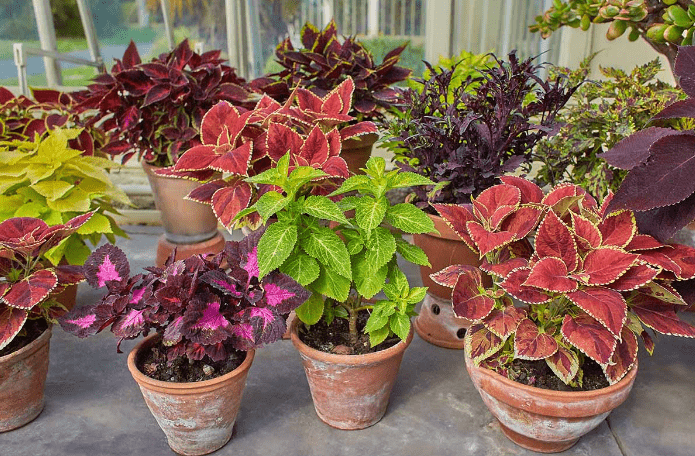
Planting Coleus Indoors
A. Choosing the Right Soil
When planting coleus indoors, it’s important to choose the right soil for optimal growth. Coleus plants thrive in well-draining, nutrient-rich soil that is slightly acidic. Look for a high-quality potting mix that is specifically formulated for indoor plants, as it will contain the right balance of organic matter, perlite, and other ingredients to promote healthy root development. Avoid using garden soil, as it can become compacted and hinder drainage in a container environment. Consider adding some organic matter, such as compost or aged manure, to the soil to provide additional nutrients for your coleus plant. It’s also a good idea to select a soil mix that is free of pests and diseases to prevent any potential issues. By choosing the right soil for your indoor coleus plant, you can create a favorable environment for it to thrive.
B. Planting from Seeds vs. Cuttings
When it comes to planting coleus, you have the option of starting from seeds or cuttings. Planting from seeds can be a more cost-effective option, but it does require a longer waiting period for the plant to reach maturity. Cuttings, on the other hand, allow you to propagate a new coleus plant from a mature, existing plant, resulting in a quicker growth and establishment. Both methods have their own advantages, so it ultimately depends on your preference and patience level. If you’re looking for a faster start, consider using cuttings, but if you’re willing to be more patient, starting from seeds could be the way to go.
Providing Optimal Growing Conditions
A. Light Requirements
Coleus plants thrive in bright, indirect light. They can also tolerate some shade, but too much shade can cause the colors in the leaves to fade. Consider placing your coleus plant near a north or east-facing window where it can receive plenty of indirect sunlight. If you’re growing coleus under artificial light, make sure to provide it with 14-16 hours of light per day. With the right light conditions, your coleus plant will grow healthy and vibrant.
B. Temperature and Humidity
Coleus plants prefer warm temperatures between 65-75°F (18-24°C). They also thrive in high humidity, so if you’re growing them indoors, consider using a humidifier or placing a tray of water near the plant to increase the humidity levels. Outdoor coleus plants should be protected from extreme temperatures and strong winds. By providing the optimal temperature and humidity, you can ensure that your coleus plant grows and flourishes.
C. Watering and Feeding
Coleus plants require consistently moist soil, so be sure to water them regularly, especially during hot and dry weather. However, it’s important not to overwater them, as this can lead to root rot. Fertilize your coleus plant every 4-6 weeks during the growing season with a balanced, water-soluble fertilizer to promote healthy growth. By maintaining proper watering and feeding practices, you can help your coleus plant thrive and produce vibrant foliage.
1. Proper watering techniques for indoor coleus.
For indoor coleus plants, it’s important to water them consistently to keep the soil moist but not waterlogged. Water the plant thoroughly, allowing excess water to drain out of the bottom of the pot. Check the soil regularly and water when the top inch feels dry to the touch. Avoid letting the soil dry out completely, as this can stress the plant. Using a saucer under the pot can help catch excess water and prevent water damage to indoor surfaces.
2. Fertilizing indoor coleus: types of fertilizers and application schedule
Indoor coleus plants benefit from regular fertilization to keep their foliage vibrant and healthy. Use a balanced, water-soluble fertilizer with an N-P-K ratio of 20-20-20 or 10-10-10. Fertilize your coleus every 4-6 weeks during the growing season, following the instructions on the fertilizer label for proper dilution and application. Be sure to water the plant before and after applying the fertilizer to prevent root burn and ensure proper absorption. Avoid over-fertilizing, as this can lead to nutrient imbalances and damage the plant. With proper watering and feeding practices, your coleus plant will thrive and reward you with beautiful foliage.
Maintaining and Caring for Indoor Coleus
A. Pruning and Pinching
Pruning and pinching are important for maintaining the shape and fullness of your indoor coleus plant. Regularly prune any leggy or overgrown stems to encourage new growth and maintain a compact shape. Additionally, pinching off the tips of new growth will promote branching and create a bushier plant. Use clean, sharp scissors or pruning shears to make clean cuts without damaging the plant. Regular pruning and pinching will keep your indoor coleus looking healthy and lush.
B. Dealing with Pests and Diseases
Dealing with pests and diseases is an important part of caring for indoor coleus plants. Keep an eye out for common pests such as aphids, spider mites, and whiteflies, and treat them promptly with insecticidal soap or neem oil. Additionally, ensure that your plant is not overwatered, as this can lead to root rot and other fungal diseases. If you notice any signs of disease, such as wilting or yellowing leaves, take action immediately to prevent it from spreading. Regularly inspecting your indoor coleus and taking preventative measures will help keep it healthy and free from pests and diseases.
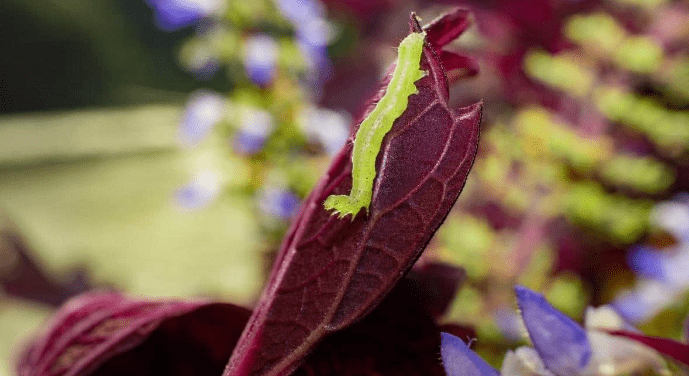
C. Repotting and Transplanting
Repotting and transplanting your indoor coleus is necessary to ensure its continued healthy growth. When the roots become crowded and start to fill the pot, it’s time to repot the plant into a slightly larger container with fresh, well-draining soil. This will provide the roots with more space to grow and access to essential nutrients. When transplanting, be gentle with the roots and ensure they are well-watered before and after the process. It’s best to do this in the spring when the plant is actively growing. With proper repotting and transplanting, your indoor coleus will thrive and continue to bring beauty to your home.
Creative Ideas for Displaying Coleus Indoors
A. Container Arrangements
One creative way to display your indoor coleus is through container arrangements. You can mix and match different colors and varieties of coleus in a single container for a vibrant and eye-catching display. Consider using containers of varying sizes, shapes, and materials to add visual interest. You can also combine coleus with other complementary plants, such as ferns or begonias, to create a unique and dynamic arrangement. Experiment with different combinations to find a display that suits your style and complements your indoor space. With some creativity and care, container arrangements can be a beautiful and versatile way to showcase your indoor coleus.
B. Vertical Gardening and Hanging Baskets
Another creative idea for displaying indoor coleus is through vertical gardening and hanging baskets. Utilize vertical space by installing a trellis or wall-mounted planter to showcase your coleus in a unique and space-saving way. You can also hang baskets of coleus from the ceiling or wall hooks to create a cascading and visually stunning display. This not only maximizes your indoor space but also adds a touch of greenery and color to your walls. Consider mixing different varieties of coleus in the hanging baskets for a diverse and dynamic display. With vertical gardening and hanging baskets, you can add a touch of whimsy and creativity to your indoor coleus display.
C. Seasonal Decor and Thematic Displays
If you’re looking to add a festive touch to your indoor coleus display, consider incorporating seasonal decor and thematic displays. During the holidays, you can adorn your coleus with ornaments, lights, and other festive accents to create a merry and bright atmosphere. For other themes, such as a beach or tropical theme, you can incorporate seashells, driftwood, and other beach-inspired elements to create a cohesive and visually appealing display. Thematic displays allow you to showcase your creativity and personality, while also adding a unique touch to your indoor coleus arrangement. They can be easily changed out to reflect different seasons or occasions, allowing for endless possibilities and variety in your indoor coleus display.
Troubleshooting Common Problems
A. Dealing with Leggy Growth
If you’re dealing with leggy growth on your coleus plants, it’s important to address the issue promptly to promote healthier growth. One solution is to prune the leggy stems to encourage bushier growth and prevent the plant from becoming too tall and spindly. Additionally, providing adequate sunlight and proper spacing between plants can help prevent leggy growth. Consider rotating the pots or containers to ensure all sides of the plant receive equal sunlight. Lastly, make sure to fertilize your coleus plants regularly to provide essential nutrients for healthy and balanced growth. By addressing leggy growth early on, you can maintain a vibrant and lush display of coleus plants in your indoor space.
B. Managing Leaf Drop and Discoloration
If you’re noticing leaf drop and discoloration on your coleus plants, there are a few things you can do to manage the issue. First, make sure your plants are receiving the right amount of water – overwatering or underwatering can both lead to leaf drop and discoloration. Additionally, check for any signs of pests or diseases and treat as necessary. It’s also important to ensure your coleus plants are receiving adequate sunlight and proper air circulation. Lastly, consider adjusting the temperature and humidity levels in the environment, as extreme conditions can also cause leaf drop and discoloration. By addressing these factors, you can help your coleus plants regain their health and vibrancy.
C. Addressing Slow Growth
Addressing slow growth in coleus plants can be done by ensuring they are receiving the proper nutrients and soil conditions. Consider using a balanced fertilizer and making sure the soil is well-draining and rich in organic matter. It’s also important to provide adequate sunlight for healthy growth. Be sure to check for any signs of pests or diseases that may be hindering growth and address them accordingly. Lastly, consider the overall environment and make any necessary adjustments to temperature and humidity levels to promote optimal growth. By addressing these factors, you can help your coleus plants thrive and reach their full potential.
In conclusion, growing Coleus plants indoors can add a pop of color and vibrancy to your space, while also providing air purification benefits. With the right care and attention, these plants can thrive indoors and bring a touch of nature into your home. Whether you have a green thumb or are new to gardening, Coleus plants are a great option for indoor gardening. Check out our next blog post for more tips on indoor gardening and plant care.
Frequently Asked Questions (FAQs)
Coleus plants thrive in bright, indirect light and prefer a warm, humid environment. Keep them away from drafts and cold temperatures.
Water your coleus plants when the top inch of soil feels dry to the touch. Be sure not to overwater, as coleus plants are susceptible to root rot.
Yes, you can fertilize your indoor coleus plants with a balanced, water-soluble fertilizer every 4-6 weeks during the growing season.
To prevent leggy growth, pinch back the growing tips of your coleus plants regularly. This will encourage bushier, more compact growth.
Yes, you can easily propagate coleus plants by taking stem cuttings and rooting them in water or moist potting soil.
Spider mites and aphids are common pests that may affect indoor coleus plants. Keep an eye out for any signs of infestation and treat them promptly. Additionally, coleus plants are susceptible to fungal diseases, so be sure to provide good air circulation and avoid overwatering.
Yes, there are many different varieties of coleus with a wide range of colors and patterns. You can mix and match different varieties to create a stunning indoor display.
During the winter, be sure to provide adequate warmth and humidity for your indoor coleus plants. You may need to adjust your watering and fertilizing routine to accommodate for lower light levels and cooler temperatures.
